FAB CSAR commandos in training. (BR. MoD -Jose Luis, Jr.
The Brazilian government must rely on a number of crack military units to maintain control of its borders. Realizing that Brazil could be an open door to international and local terrorists, the military has organized outfits able to deal with such threats and protect the State. This has resulted in one of the most efficient armies in Latin America, and yet one of the least known outside the region. The Army fields several brigades, to include 1 Parachute, 1 Spec Ops, 1 Air Assault Light Infantry, 1 light infantry for peacekeeping Ops and Urban Warfare, 1 Frontier, 2 armored, 4 mechanized, 5 jungle, 10 motorized, 4 divisional artillery, 2 construction engineer, 1 air defense, and 1 army aviation.
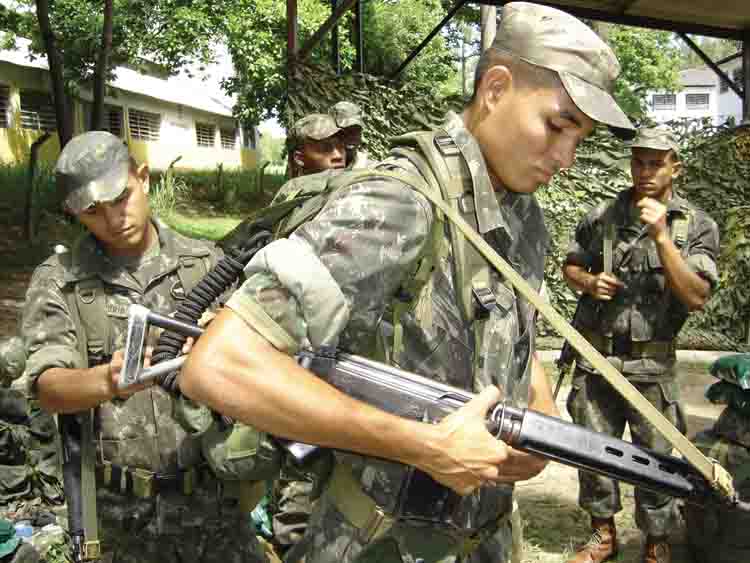
Small arms include M964 and variants (Imbel FAL), Imbel MD2 & MD97 rifles. Special operators make intensive use of the M4 carbine along with FAMAS, G3A3 and G3SG1 rifles. Taurus is now distributing the Tavor TAR-21 to the Frontier Bde. Submachine guns include the Taurus M972 (Beretta M-12), and the MP5 range. Snipers have access to the Barrett M82A1, HK PSG-1, M700 and ACGL rifles. Elite outfits use the HK21E and the Minimi-Para Mk-2. The MAG 60-20 is distributed to all the services.
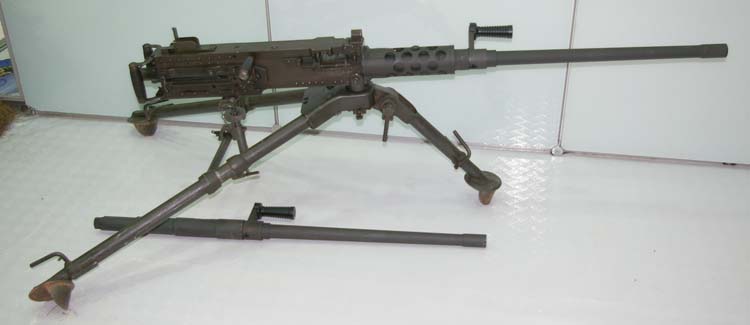
Light Infantry
Due to the nature of the country, which is covered in most part by the dense Amazonian rain forest, many of the military units are trained and geared for jungle warfare. The Centro de Instrução de Guerra na Selva (Selva – CIGS) operates from Manaus, sharing installations with the Amazon’s Military Command (Comando Militar da Amazônia). The Center prepares leaders in the conduction of small unit tactics. The Jungle Warfare Training develops in three phases: Jungle Survival, Skill Development, and Jungle Operations.
The Jungle Warfare Training Center prepares operators for the jungle, hunter, and frontier infantry outfits. These are particularly adapted and skilled to operate in the Amazon’s environment. The Jungle Infantry units include the 1ª Brigada de Infantaria de Selva (Bda.IS) also known as Brigada Lobo D’Almada, the 2nd Bda.IS or Brigada Ararigbóia, the 7th Bda.IS, the 10th Bda.IS, the 16th Bda.IS, the 17th Bda.IS or Brigada Príncipe da Beira, and the 23rd Bda.IS.
There are several other outfits that appear to operate independently from the brigade structure, including the 1st Jungle Infantry Battalion (1º Batalhão de Infantaria de Selva [BIS]- Batalhão Amazonas), the 2º BIS – Batalhão Pedro Teixeira, the 4º BIS – Batalhão Plácido de Castro and the 8º BIS.
The Jungle Brigades and Battalions deploy in Destacamentos de Operações de Selva (DOS), which are small 12-men units providing long distance reconnaissance, surveillance and patrols along the borders. The DOS are inspired in their training, organization and doctrine on the A Teams of the USSF, with two officers and 10 enlisted NCOs. The preferred weapons include the legendary Para-FAL, and MAG MGs.
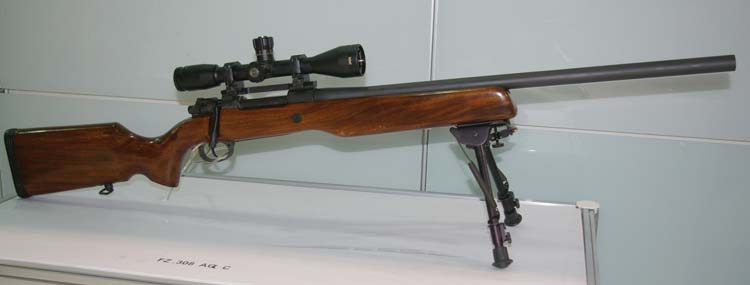
The Hunter Battalions include the 19º Batalhão de Caçadores (BC), the 23rd BC, the 24th BC, the 25th BC, and the 28th BC.
The light infantry also lists the Frontier Guard Command, which operates from Amapá, and the 18th Frontier Infantry Brigade, operating from Mato Grosso. In the same State of Mato Grosso we find the 2nd and 17th Frontier Infantry Battalions. In addition, Special Frontier Platoons have been established to monitor the frontier; each PFE is formed with 50 men.
The very harsh Caatinga Region is home of the elite 72° Batalhão de Infantaria Motorizado (or 72° BIMtz), better known as Batalhão General Victorino Carneiro Monteiro. Its HQ is at Petrolina, Pernambuco, having its origins with the 2nd Riflemen Company/35th Inf Bn. (Feira de Santana)/10th Motorized Infantry Brigade. The company operated independently as a specialized outfit since 1975. It became the elite 72° BIMtz in 1982, when the Army realized the need for a larger unit to operate in this vast and difficult area. The battalion deployed to Angola as part of the UN forces between September 1995 and April 1996.
Mountain warfare is the dominium of the 11o Batalhão de Infantaria de Montanha (11o BI Mth), from São João Del Rei, Minas Gerais. The lineage of the 11th Mountain Battalion can be traced to 1888, with the establishment of the 28o BI PARDO – RS, as part of the so-called “Canudos” campaign.
Parachute Force
The Vila Militar de Rio de Janeiro holds the colors of the Parachute Infantry Brigade (Brigada de Infantaria Pára-quedistado Exército Brasileiro). The Paras, along with the Air Assault Brigade, is part of the Rapid Action Force (Força de Ação Rápida). Its tasks include tracking, pursuing and apprehending dangerous criminals, poachers and smugglers.
The Parachute Brigade has its origins within the Parachute School established on December 26, 1945. A year before, the government had dispatched 47 soldiers for airborne training in the United States. By 1953 there was a pressing need to establish what was denominated Nucleus of the Airborne Division. By 1969 the Army decided to emphasize smaller, more mobile units, and replaced the Division with the Parachute Brigade in 1971, and this is renamed the Parachute Infantry Brigade in 1985.
Today, the Para Brigade comprises a HHC Company, the 25th Batalhão de Infantaria Pára-quedistas (BIP-Infantry Parachute Battalion), 26th BIP, and 27th BIP, supported by a Pathfinders Company (20ª Companhia de Presursores Pára-quedistas), a Support and maintenance Parachute Battalion (Batalhão de Dobragem, Manuntenção de Pára-quedas e Suprimento pelo Ar), a Field Artillery Battery, and an AAA Battery. There is also a Cavalry Reconnaissance Unit assigned to this outfit, and other support elements.
The 25th Batalhão de Infantaria Pára-quedistas (BIP-Infantry Parachute Battalion) – or 25o BI Pqdt as it is known in Brazil – has its origins with the School Infantry Company raised on 26 December 1945, as part of the Antiaircraft Artillery Regiment at Colina Longa, Deodoro, Rio de Janeiro. Then, on September 5, 1952, the Army expanded the unit to become Airborne Infantry Battalion (Batalhão de Infantaria Aeroterrestre), and in October of 1956 the unit is named the Batalhão Santos Dumont, and in 1961 this becomes the Santos Dumont Regiment. This unit becomes the 3rd Parachute Infantry Battalion, but by November 7, 1973, it becomes the 25th Parachute Infantry Battalion, with three Parachute Riflemen companies (1ª, 2ª & 3ª Companhias de Fuzileiros Pára-quedistas), a Command and Services Company, and a HHC group.
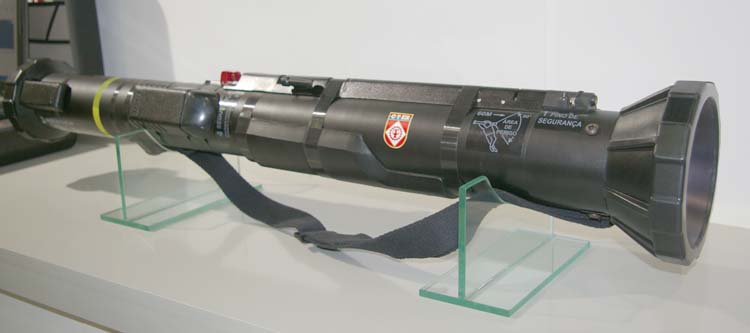
The 26o BI Pqdt and the 27º BI Pqdt. also trace their lineage to Decree Nr 49.863, dated January 11, 1961, establishing the Regimento Santos Dumont. The 26th and 27th Parachute Infantry Battalions are officially established in 1973. The 27º BI Pqdt is based at Sâo Goçnaho.
The 1º Esquadrão de Cavalaria Pára-quedista (1st Parachute Cavalry Squadron) is established on December 21, 1981, with Celso Carlos Antunes as its first commander. According to the Brazilian Army, the unit is today equipped with locally-built Jaracara armored reconnaissance vehicles. In 1993, the Parachute Cavalry expands with the 2nd Parachute Cavalry Platoon. By late-2005, the unit counts with 3 platoons (Pelotões de Cavalaria Pára-quedista), an Administrative Base, and a Command Platoon to meet its tasks.
The 20th Parachute Logistical Battalion remains as the main support unit of the brigade.
Air Assault
The 12ª Brigada de Infantaria Leve (Aeromóvel), from Caçapava, São Paulo, is tasked with air assault and airmobile tasks. The lineage of the unit can be traced to the establishment of the 4th Infantry Brigade in June 1919 around São Paulo. The 4th Inf. Bde. receives several transformations, and in 1971 it becomes the 12th Infantry Brigade assigned to the 2nd Army Division. In 1987 the unit transforms into the 12th Motorized Infantry Brigade, and on June 19, 1995, under Ministerial Order No.023, it becomes the 12th Light Infantry Brigade (Airmobile) from Caçapava.
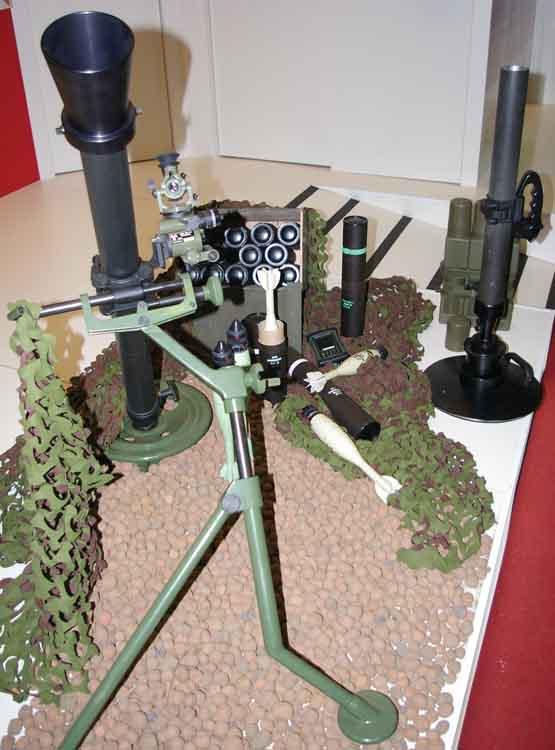
The Brigade is optimized for air assault, infiltration (air, land and sea), and urban combat. To accomplish its missions, the Brigade depends on the helicopter as a principal means of movement, so it works closely with the 1º Grupo de Aviação do Exército (1st Army Aviation Group). Its subordinated units include the 5th, 6th and 39th Light Infantry Battalions or BILs (Batalhão de Infantaria Leve), the 20th Light Artillery Group, and the 22nd Light Logistical Battalion.
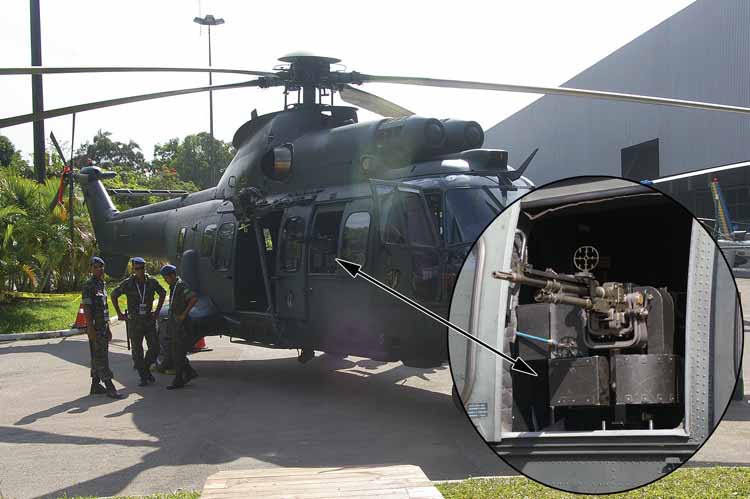
The 5th Batalhão de Infantaria Leve – Regimento Itororó, traces its origins to the 5th Infantry Regiment established in June 1908, with the 13th and 14th Infantry Battalions. The unit transformed throughout the years, until the 2nd of June of 1992, when under Ministerial Order No.030 it became the 5º Batalhão de Infantaria Leve.
The 6th BIL also traces its lineage to several battalions raised in 1908 (16th, 7th and 18th). It became the 6º Batalhão de Infantaria Leve under Ministerial Order No.024, in June 1995. In June 1995, under Ministerial Order No.025, the Army officially adds the 39th Light Infantry Battalion to the 12th Light Infantry Brigade (Airborne), along with the 20º Grupo de Artilharia de Campanha Leve (20 GAC L) (Ministerial Order No.026).
Special Operations Brigade
The Brazilian government started its first CT unit in 1953, with the Ministry of Aviation establishing its own anti-hijacking unit. Out of this, the military started the Talon Project, a 13-week course to prepare all new commandos.
Today, the Air Force (FAB) has the Aeronautical Center of Ground Operations (TO QUOPTE) subordinated to the General Air Operations Command (COMGAR), and comprising the BINFAE-CO (Canoas Special Aeronautics Infantry Battalion). This outfit was established in 2002. One of its units, the 1st CAAAD is equipped with 9K38 Igla Manpads. There is one squadron dedicated to combat search and rescue. In addition, the FAB deploys what it calls the Special Aeronautical Infantry – much like the RAF Regiment – in charge of protecting FAB installations and closely associated to airborne operations. The Batalhão de Infantaria da Aeronáutica Especial deploys units at Dos Afonsos (BINFAE-AF), Brasilia (BINFAE-BR), Canoas (BINFAE-CO), Galeão (BINFAE-GL), Manaus (BINFAE-MN), Recife (BINFAE-RF) and Río de Janeiro (BINFAE-RJ). The TO QUOPTE is complemented with the CSAR unit capability. All these units are equipped with the SIG-550 as their standard weapon.
The Army, on the other hand, depends on its own Special Operations Brigade (Brigada de Operações Especiais), comprising an Administrative Base, the 3ª Companhia de Forças Especiais (Pára-quedista) with base at Manaus, the Special Operations Training Center (Centro de Instrução de Operações Especiais), the NBC Company (Companhia de Defesa Química, Biológica e Nuclear), the 1º Batalhão de Forças Especiais (Pára-quedista), the Destacamento de Operações Psicológicas and the 1º Batalhão de Ações de Comandos (Pára-quedista).
The Brigade was activated in 2004 at Rio de Janeiro. It lists more than 2,000 men ready to deploy anywhere in Brazil within 6 hours notice. There is a small detachment directly subordinated to the President for immediate action. The Brigade has been relocated from Rio de Janeiro to Santa Genoveva, Goiânia, so it can be closer to the Capital, Brasília, and consequently to the Anápolis Air Base and the Santa Genoveva airport.
The nucleuses of the Brazilian Special Forces teams are the DOFE and the DAC. The Destacamento Operacional de Forças Especiais is in charge of reconnaissance. These commandos are experts in infiltration and extraction techniques. The actual raid or hit is carried by the DAC (for Destacamento de Ação de Comandos). Each of these detachments comprises between 12 and 14 men, with 4 officers forming a command element, and four or more “duplas” forming the tactical element. Each dupla consists of two NCOs
Spec Ops Battalion
The Brazilian Spec Ops reorganized under Project Talon, for an emphasis in counter-terrorism. A CT team under this name is said to be operational from volunteers coming from airborne or special operations units, who attend a 14-day selection before attending a 13-week CT-CQB specialization. What is well known and established is that the 1st Special Forces Battalion (1º Batalhão Operações Especiais) has gained considerable reputation as one of the best intervention units in Latin America. A high degree of preparation in urban warfare and intervention is required in order to enter and to bring order to the shantytowns of the big Brazilian cities (the fabelas), which are among the most dangerous in the world. Therefore, the Battalion has been called in on several opportunities to lend a hand to the police. This is not your usual police beat. One of the police patrols was observed exchanging fire with the tugs using M16 rifles and an elderly Madsen machine gun.
The origins of the Brazilian Spec Ops can be traced to a search and rescue parachute unit that was established in 1953. The first SF course was established in 1957, and evolved with its own doctrine and tactics through the years. The 500 strong 1st Special Forces Battalion (1º BFEsp for short) was established on November 1, 1983, moving to the military installations at Camboatá, Rio de Janeiro on September 27, 1984. In November 1991, the battalion took the colors, lineage, and historical name of Batalhão Antônio Dias Cardoso.
The 1º BFEsp divides its forces into a Command Company, the 1st and 2nd Airborne Special Operations companies, a Support Company, and the Counter-Terrorist Detachment (CTD). The CTD is in charge of counter-terrorist actions in the country, and maintains close ties with the GOE of Portugal. The CTD strength is believed to include 200 men divided into platoons of about 25 operators each.
The single Commando Company, at one point part of the SF Battalion, has evolved in the Battalion of Airborne Commando Activities (1º Batalhão de Ações de Comandos [Pára-quedista]). The old installations of the 1º BFEsp became the Centro de Instrução de Operações Especiais (CI OP ESP). The basic Special Operations training has a duration of 16 weeks encompassing jungle, riverine, and mountain warfare. The desert phase takes place at the Caatinga region, with has a particular harsh semi-desert environment.
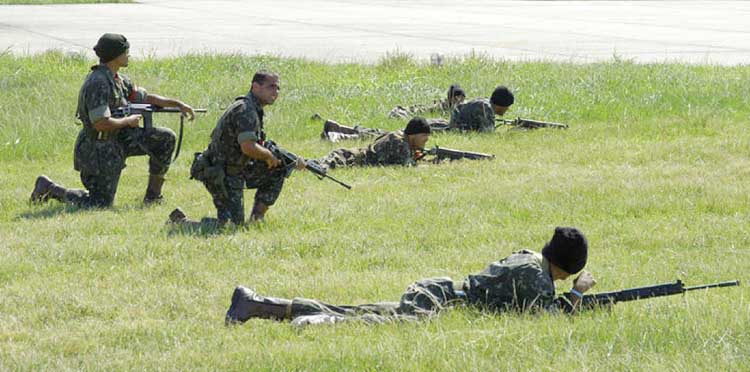
The Special Forces Training Center offers courses for Snipers (Caçador), infiltrators (Mergulho Operacional), while the Centro de Instrução Pára-quedista General Penha Brasil provides several other specialty courses.
Conflictive Frontier
The military has successfully implemented the SIVAM (or Amazon Vigilance System) at a reported cost of $1.4 billion. Some of the funds come from the U.S. since this radar system will help to monitor small-plane flights over the huge jungle region. The government has stepped up efforts and has set aside a budget of $3.5 billion over the next eight years to acquire transport aircraft, and additional helicopters, for moving troops well inside the jungle. The Brazilian Armed Services are now tasked with controlling the frontier with Bolivia, Colombia, French Guiana, Guyana, Peru, Suriname, and Venezuela.
| This article first appeared in Small Arms Review V14N6 (March 2011) |










